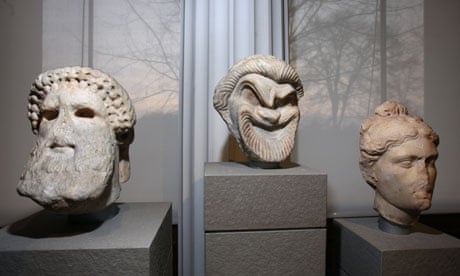Today's announcement of major museum funding from Arts Council England (ACE) is generally sound. It's reassuring that by applying strict criteria and a transparent process ACE has arrived at a pretty well-balanced portfolio of major partner museums — with one or two exceptions.
The list of 16 successful applicants includes most of the great Victorian city museums in England such as Bristol, Birmingham, Newcastle (as part of Tyne and Wear Archives & Museums), several in Manchester, the Fitzwilliam and the pre-Victorian Ashmolean.
All well deserve their funding.
But there are striking omissions: in Yorkshire there's no Sheffield, Hull or Bradford. And there's nothing in the whole of the East Midlands – no Leicester, no Nottingham, which is a fairly predictable effect of the requirement for major partner museums to have a collection officially designated as of national significance. Neither Nottingham nor Leicester are designated.
There were always going to be winners and losers in the rush for the £20m of major grants funds and ACE will be working hard to fill the East Midlands gap using some of its £15m strategic support fund that still remains to be allocated.
For the next year most of that strategic support money will go to museum services that used to get Renaissance funding from the Museums, Libraries and Archives Council (MLA), but now are not in the major museums club.
As well as those I've mentioned already, other casualties in need of care include smaller museums that have been doing fantastic and innovative work over the past few years such as Luton, Coventry, Chatham, Preston and Colchester.
I empathise with these museums, and others that achieved such good things with their Renaissance funds. But in the longer term they have a good chance of getting strategic funds.
An interesting fact: apart from the East Midlands, with its big round zero, every English region has exactly two major partner museums, although in some cases these include three museum services and many more museum sites. In fact no less than six services are funded in the North West. And of 45 former Renaissance-funded museum services, only 21 are in, some as part of a consortium, and 24 are out.
In all there were 29 eligible applications for funding, seeking a total of around £40m a year against the £20m available. That £20m is to be split between 16 major partners, consisting of single museums, museum services and consortia.
The 16 are members of an elite club: not only will they be regarded as a sector leadership group by ACE, but they are all being invited to join the great and good in the National Museum Directors' Conference. They'll also get highly desirable three-year funding agreements, something the over-bureaucratic MLA has never managed to achieve.
Shockingly, not a single Renaissance hub has survived intact. The only bright, shining partnership spots are Beamish and Bowes in the North East, Exeter and Plymouth in the South West and Oxford University and Oxfordshire. From one point of view, today's announcement is a little disappointing in its robustness and safe predictability – I'd hoped the new assessment process would give just a few more imaginative and unexpected groupings.
The only innovation is in Cumbria, where two museum trusts have partnered with Carlisle's Tullie House Museum. The Cumbria group stands out as appealing, inventive and new.
Overall, there are just three new funding recipients: the two in the Cumbria consortium and Thinktank, by dint of its merging with Birmingham Museums in a new mega-trust. The lack of novelty is understandable; it would be hard, if not impossible, to support major funding for entirely new bids when so many good — even excellent — Renaissance museums have lost out.
And I remain optimistic; there's still £15m a year to play for and that can both support some of the losers and allow a few new, bright sparks in.
This content was originally published by the Museums Association
Maurice Davies is head of policy and communication at the Museums Association. Follow the association's Twitter account @museum_news
This content is brought to you by Guardian Professional. To get more articles like this direct to your inbox, sign up free to become a member of the Culture Professionals Network.

Comments (…)
Sign in or create your Guardian account to join the discussion